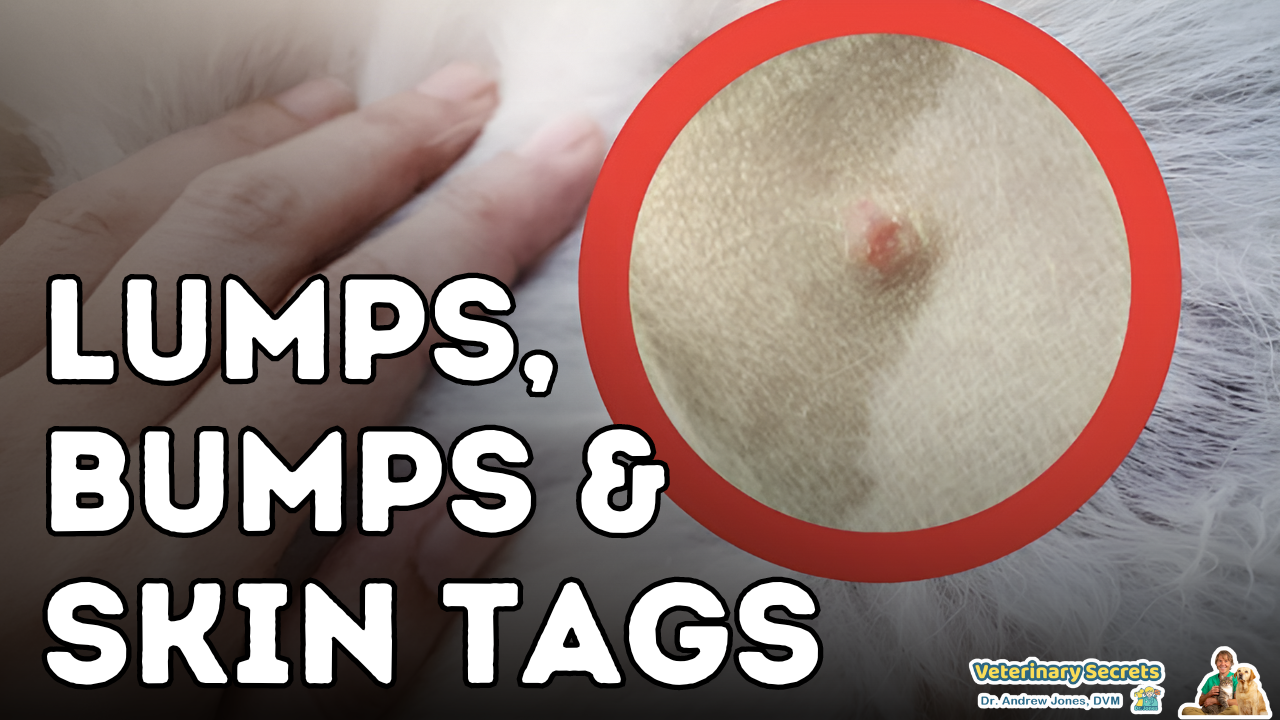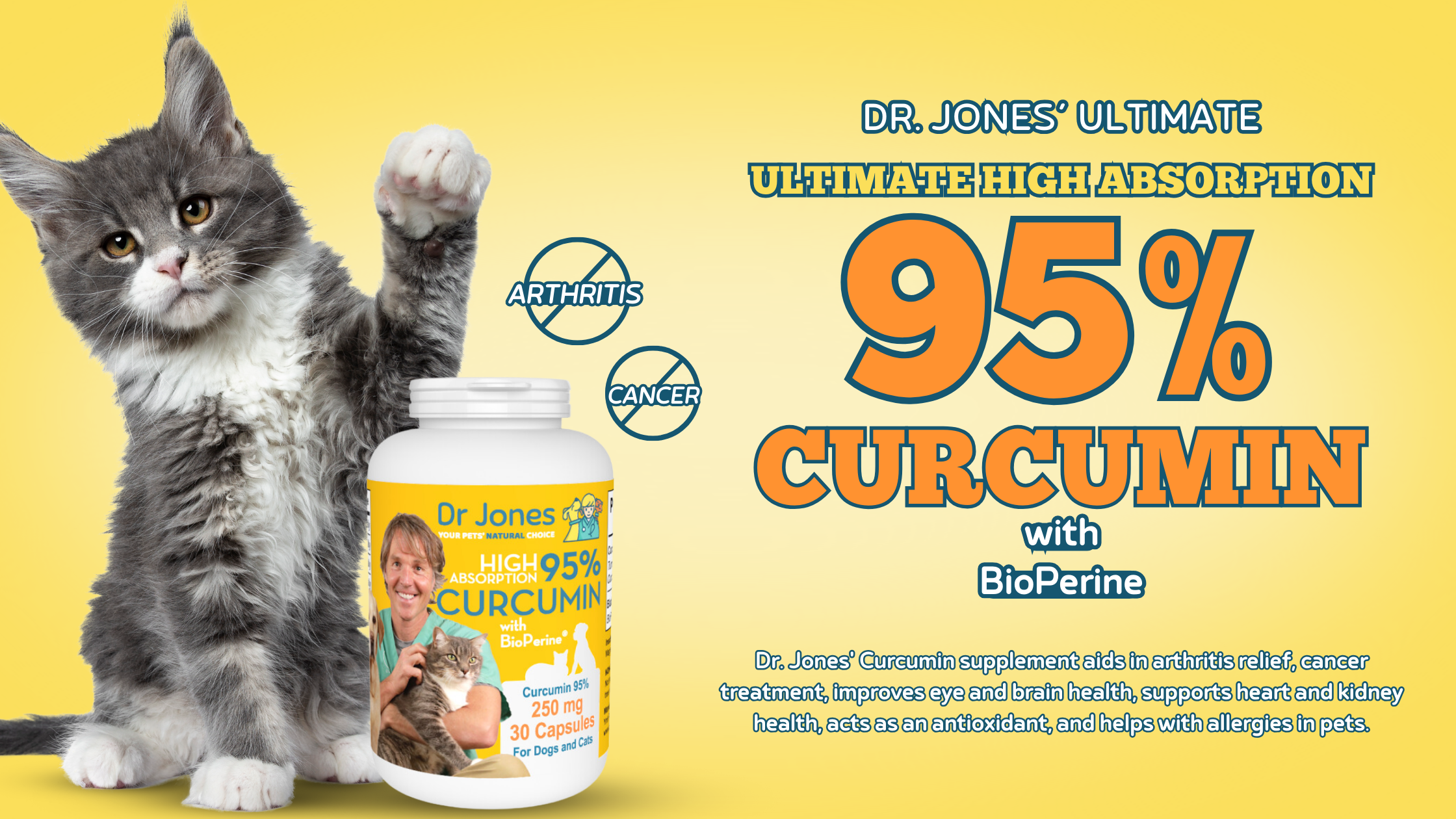How to Safely Remove Skin Bumps and Tags: 11 Proven Tips

Should I worry about this lump on my dog or cat doc? Great question, and in today’s newsletter, I’ll show you how to tell if it is serious, or something to just monitor.
Fortunately most of the lumps we find on our pets are not serious, but even those can cause problems.
In some cases there are supplements that may increase the effectiveness of the immune system, and help it attack the growth.
One of the option you should consider is our NEW 95% Curcumin Supplement, Dr. Jones’ Ultimate High Absorption 95% Curcumin for Dogs and Cat




Dog Lumps and Cat Lumps: 11 Quick And Easy Solutions
If you discover a lump on your dog or cat, it’s important to understand that many such lumps are benign. While most dog lumps are not a cause for concern, lumps on cats often require more attention as they may be cancerous. Discovering these lumps, often while petting your pet, can be alarming, but there are steps you can take to manage or treat them at home.
Understanding Lumps in Pets
Lumps can appear anywhere on the body such as the chest or back and can vary in size and texture. In dogs, common lumps include lipomas (benign fatty tumors) and sebaceous cysts (blocked skin glands). Cats may develop cysts as well, but firm, rapidly growing lumps should be checked immediately as they might be cancerous.
Home Treatments for Lumps
-
Assess the Lump:
- Regularly shaped, slow-growing, and easily movable lumps under the skin are usually benign.
- Lumps that discharge a cheesy material are typically sebaceous cysts.
-
Visit Your Veterinarian:
- For a professional assessment, have a veterinarian perform a needle aspirate and cytology to determine the nature of the lump.
-
Maintain Cleanliness:
- Keep any ruptured cysts clean by washing the area twice daily with an antiseptic solution and trimming the hair around the cyst.
-
Apply Compresses:
- Use warm compresses on enlarged but unruptured cysts to reduce their size. Apply a warm cloth to the area until it cools, twice daily for at least 7 days.
-
Boost the Immune System:
- Administer Vitamin E (100 IU per 10 lbs of body weight daily) and omega-3 fatty acids (from fish or krill oil) to enhance your pet’s skin immune function.
-
Utilize Healing Mushrooms:
- Supplements such as Turkey Tail, Reishi, and Chaga mushrooms can stimulate the immune system (100mg per 10 lbs daily).
-
Apply Apple Cider Vinegar (ACV):
- ACV can act as a peeling agent to remove dead skin cells. Apply soaked ACV cotton balls overnight to affected areas.
-
Herbal Remedies:
- Use topical Aloe and Calendula creams to reduce inflammation from ruptured cysts.
-
Green Tea Extract:
- This supplement (50 mg per 10 lbs daily) can stimulate the immune system and help manage lump growth.
-
Cannabinoid Supplements:
- CBD oil and cannabinoid blends may reduce inflammation and enhance the immune system’s response to growths (3mg/10lbs twice daily).
-
Homeopathic Solutions:
- Thuja is often recommended for any type of lump, with a dosage of 30C once or twice daily for at least 30 days.
Preventive Measures and Additional Supplements
- Colostrum: Topical and oral applications of bovine colostrum can promote the immune system (100mg/10lbs daily).
- Curcumin: This component of turmeric has anti-inflammatory properties, with doses ranging from 50-100mg per 10 lbs once or twice daily.
While the presence of lumps can be concerning, many are benign and manageable with home care. Always consult with your veterinarian if you are unsure about the nature of a lump. For additional support, consider our range of supplements, including Dr. Jones’ ULTIMATE High Absorption 95% Curcumin, known for its enhanced bioavailability and potent anti-inflammatory effects.
Note: Most lumps, if slow-growing and soft, can simply be monitored. However, for peace of mind, a quick aspirate by your veterinarian can be reassuring. Remember, early detection and proper assessment are key to managing your pet’s health effectively.

Do you sell vitamin E as mentioned in the above article?
We have the Ultimate Canine Formula that is rich with Vitamin E.
https://shop.veterinarysecrets.com/supplements.html
My 3 year old female dog just had a cyst like bump appear on her back lack 3 or 4 days ago its scaring i dont know what to do can u please help me im begging u
Here’s one of our videos that can help:
https://youtu.be/DHLGWbMIap8